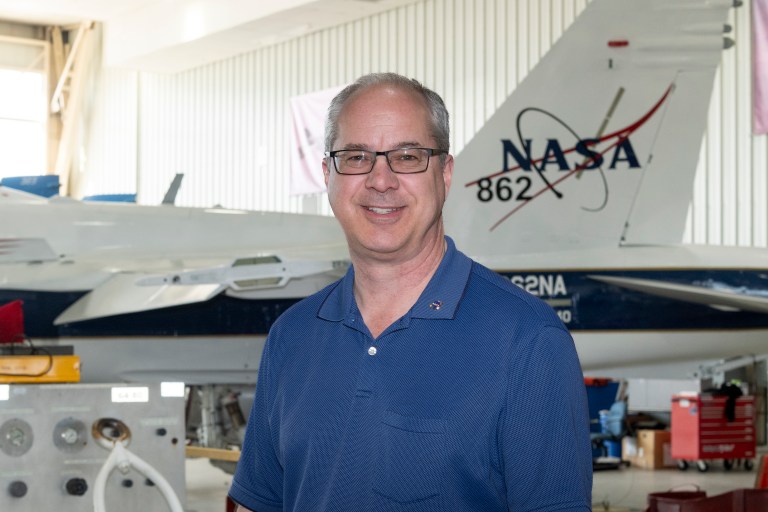
Edward A. Haering Jr.
NASA Armstrong Aerospace Engineer
Contents
Edward A. Haering Jr. is an aerospace engineer and technical lead for supersonic aerodynamic research at NASA’s Armstrong Flight Research Center in Edwards, California, a position he’s held for almost 40 years. As technical lead for several commercial supersonic technology projects, including X-59 aircraft test preparation, CarpetDIEM (Carpet Determination In Entirety Measurement), and full-scale airborne schlieren photography, which captures images of sound shock waves, he is responsible for program conception, planning, execution, analysis, and data reporting. He works with NASA’s Aeronautics Research Mission Directorate management to develop future flight research activities in supersonics for acoustics, often in cooperation with other U.S. government agencies, industry, and academia.
Additionally, Haering is a subject matter expert for sonic boom and shock wave measurement, air data calibration, and the use of GPS and ground-based radar in flight research. He is responsible for analysis, reporting, and database development of sonic boom project data to be used for computational code validation.
Experience
Since 1987, Haering has served as a research engineer on more than 30 aircraft and spacecraft, which in addition to the X-59, also include the B-52 heavy-lift airborne launch aircraft, Pegasus Space Launch Vehicle, DC-8 airborne science laboratory, F-18 High Alpha Research Vehicle, X-29 Advanced Technology Demonstrator Aircraft, X-38 Prototype Crew Return Vehicle, and X-43A Hypersonic Experimental Vehicle. He has been principal investigator or technical lead on such projects as SonicBAT (Sonic Booms in Atmospheric Turbulence), LaNCETS (Lift and Nozzle Change Effects on Tail Shock), and the SR-71 Sonic Boom Propagation Experiment. He also was chief engineer for NASA F-15B and F-104 aircraft.
Haering first came to NASA Armstrong (then Dryden) in 1984 as a cooperative engineering student while still in college. Following graduation, he accepted an offer of a full-time engineering position at the center.
Haering authored or co-authored about 60 technical papers. He has received patents on five inventions: “Stable Algorithm for Estimating Airdata from Flush Surface Pressure Measurements” (2001); “Real-Time, Interactive Sonic Boom Display” (2012); “Background Oriented Schlieren using Celestial Objects” (2017); “Air-to-Air Background Oriented Schlieren Technique” (2019); and “Method for Identifying Aircraft That Exceed a Specified Noise Condition in a Defined Geographical Area” (2023).
Education
Haering earned a Bachelor of Science in aeronautical and astronautical engineering in 1987 from the University of Illinois, Champaign-Urbana. He also earned a Master of Science in aerospace engineering in 1991 from the University of Southern California, Los Angeles. Among a long list of honors, Haering received a NASA Exceptional Service Medal in 2018; honorable mention for the 2010 NASA Software of the Year Award for his sonic boom cockpit display; the NASA Exceptional Achievement Medal in 2008 for his development of the low boom no boom flight research experiment; and the Flight Test Engineer of the Year Award in 2003 from the Antelope Valley Chapter of the Society of Flight Test Engineers.




























